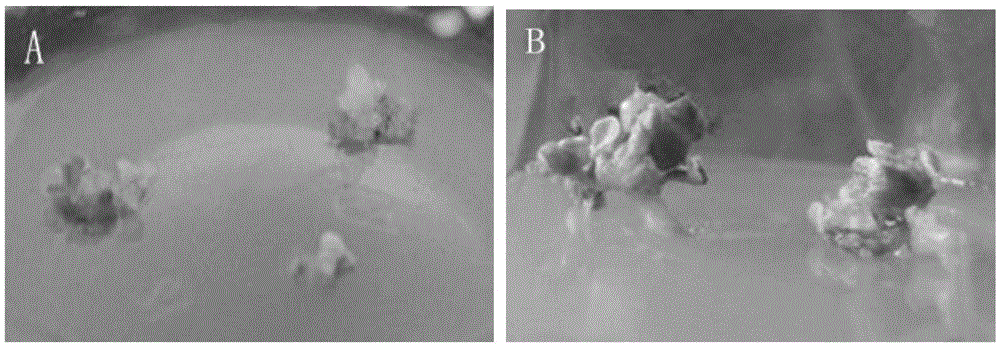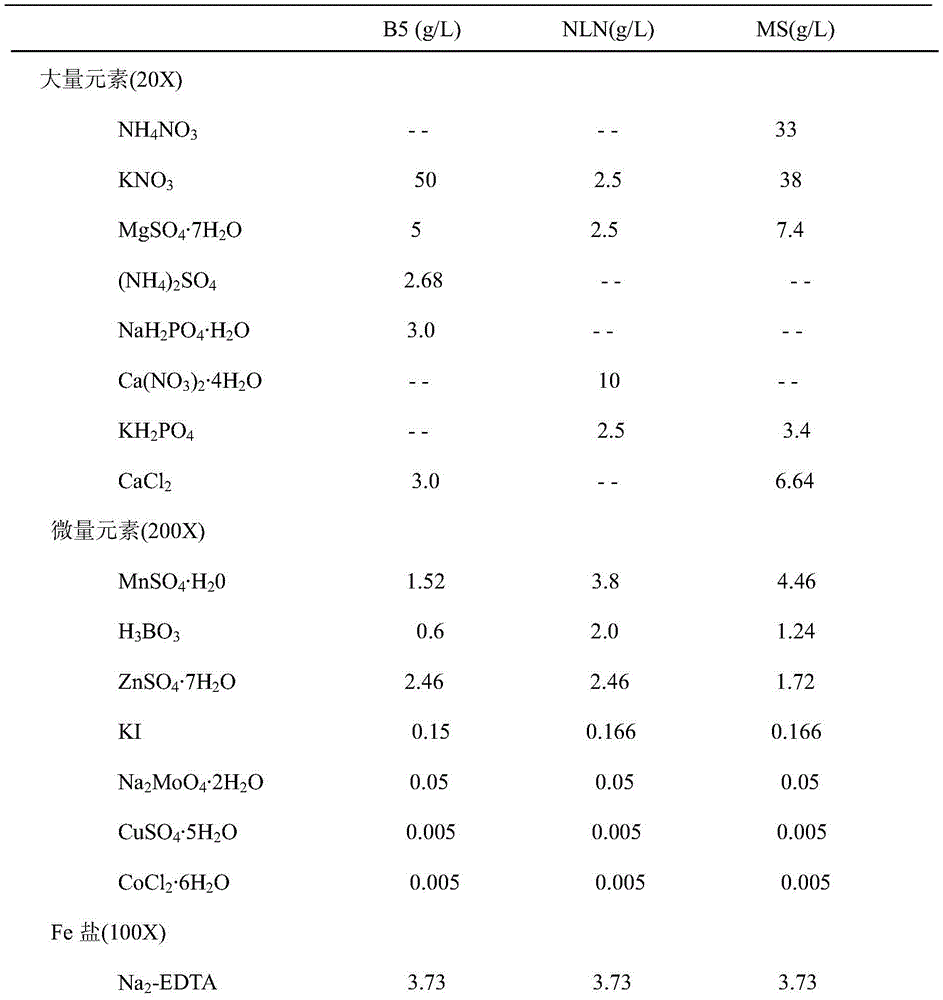Method for quickly and efficiently obtaining free microspores of Brassica vegetables and cultivating regenerated plants
A technology for culturing microspores and regenerating plants is applied in the field of plant tissue culture, which can solve the problems of low seedling efficiency and save time.
- Summary
- Abstract
- Description
- Claims
- Application Information
AI Technical Summary
Problems solved by technology
Method used
Image
Examples
Embodiment 1
[0042] The preparation of embodiment 1 culture medium
[0043] 1. Preparation of mother liquor
[0044] Before the experiment, the macroelements, microelements, organic elements and iron salts of the various culture media that need to be used in the method of the present invention are formulated into mother liquor and stored in 4 ℃ of refrigerators, and the preparation concentration is respectively: 20 times (hereinafter used 20X), 200 times (hereinafter expressed as 200X), 100 times (hereinafter expressed as 100X) and 100 times (hereinafter expressed as 100X), the specific components are shown in Table 1.
[0045] Various mother solution formulas of free microspore culture in table 1
[0046]
[0047]
[0048] 2. Preparation and sterilization of medium
[0049] ① Microspore medium (1 / 2NLN-13): 1 / 2NLN+13% sucrose, pH 6.0-6.2;
[0050] The culture medium was sterilized by suction filtration with a 0.22 μm microporous membrane;
[0051] ②Microspore extract (B 5 -13): ...
Embodiment 2
[0059] Example 2 Culture of free microspores of Brassica vegetables and induction of embryos
[0060] 1. Genotype: non-heading Chinese cabbage NHCC-549; broccoli A36-5, A47-4, A48-3.
[0061] Non-heading Chinese cabbage NHCC-549 - a hybrid of "Maertou" and "Komatsucai" (from "Maertou" as the female parent and "Komatsucai" as the male parent by conventional methods); Broccoli A36- 5—the product name is "Excellent No. 1"; broccoli A47-4—the product name is "Jiulu"; broccoli A48-3—the product name is "Fudao". All were purchased from Mingda Seed Management Department of Jiangsu Academy of Agricultural Sciences.
[0062] 2. Selection of flower buds: at the initial flowering stage and the full flowering stage, determine the developmental stage of the microspores and the corresponding relationship with the length of the flower buds through the microscopic examination of the acetic acid magenta tablet method, and accurately find the flower buds whose developmental stage is the mononu...
Embodiment 3
[0074] Example 3: Inducing embryoid bodies to obtain regenerated shoots
[0075] 1. Shaking culture: transfer the embryoid body obtained in Example 2 to 2000lx, 25°C, 60r / min shaker for shaking culture; 2. Induce the embryoid body to obtain regenerated buds: transfer the cotyledon-type embryos that have been turned green for the same number of days Transfer to two B5 solid media containing 2.5% sucrose, 1% agar powder and 2.5% sucrose, 0.8% agar powder (ck) to continue culturing for 15-20 days. The culture conditions are 90uE / m2 / s, 12hr / d. A culture room at 25°C. Observe its growth and make statistical records.
[0076] The implementation results are as follows:
[0077] The results in Table 3 show that: ① NHCC-549 and A48-3 were almost completely browned on the B5 solid medium containing 0.8% agar, and the embryogenesis rate was extremely low, but on the B5 solid medium containing 1% agar, they all induced The germination rates of regenerated buds were 0.50 and 0.33 respe...
PUM
 Login to View More
Login to View More Abstract
Description
Claims
Application Information
 Login to View More
Login to View More - R&D
- Intellectual Property
- Life Sciences
- Materials
- Tech Scout
- Unparalleled Data Quality
- Higher Quality Content
- 60% Fewer Hallucinations
Browse by: Latest US Patents, China's latest patents, Technical Efficacy Thesaurus, Application Domain, Technology Topic, Popular Technical Reports.
© 2025 PatSnap. All rights reserved.Legal|Privacy policy|Modern Slavery Act Transparency Statement|Sitemap|About US| Contact US: help@patsnap.com



